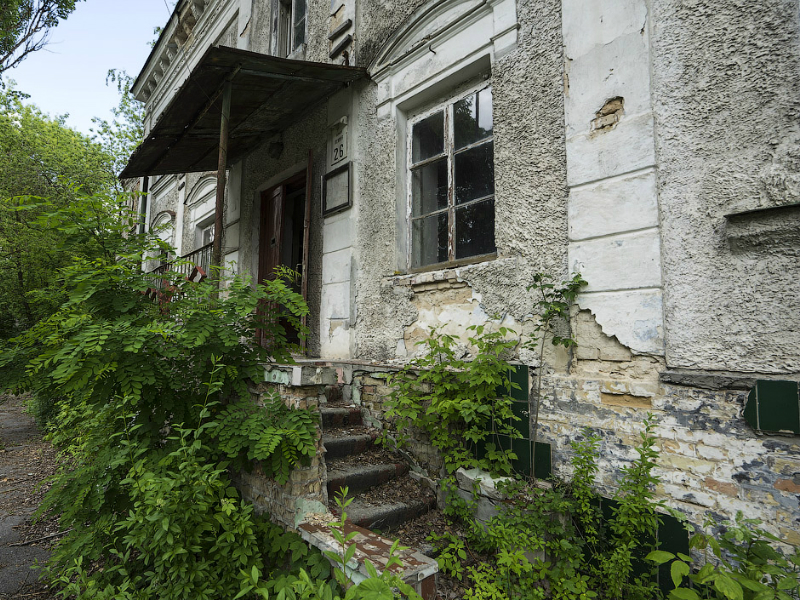One of the most striking scenes of HBO’s miniseries Chernobyl, is when the residents of Pripyat, located about three kilometres from the site of the Chernobyl nuclear plant, evacuate the city. They are ordered to bring their documents, some food and basic clothes. People walk, carrying their children and suitcases while assisting local elders. They are loaded into buses, which leave, never to return again. The viewers know that it will take 20,000 years for Pripyat, Chernobyl and the zones around the explosion to be once again safe for human habitation, but the people loading on buses are told that they would return within a week.
Eyewitnesses and survivors of Chernobyl have uniformly praised the series’ incredible historical accuracy and attention to detail. Indeed, the show relied quite significantly on a book Chernobyl Prayer, by Nobel Prize- winning author Svetlana Alexievich. To research the book, Alexievich conducted hundreds of in-depth interviews with Chernobyl firefighters, their wives, rescuers, soldiers and residents, a significant number of whom were cancer patients or survivors. Many noted, however, that the evacuation scene did not seem realistic, because as far as they remember, people did not walk, but instead stepped right into the buses which waited for them by their apartment buildings.
Some critics pointed out that this scene is reminiscent of the portrayal of Holocaust-era deportations, featuring Jews leaving their communities and walking to their imminent deaths. But what no one so far has talked about is that Chernobyl, Pripyat and that entire region did experience forced deportations and killings 45 years earlier during the Second World War, as German soldiers went into people’s houses, and dragged them out to their deaths.
The region was once home to the important Chernobyl Hasidic community, and by 1897, its Jewish population reached 5,526 representing 59 per cent of the city. The last local Chernobyl Rebbe, Chaim Twersky was arrested by Stalin’s government for conducting religious activities in 1933, and deported to Kazakhstan, where he died in 1942. Other members of the Chernobyl dynasty still live in Israel, with the largest concentration in Bnei Brak.
By 1939, 1,783 Jews lived in Chernobyl, one in every five residents of the town. The German army occupied the city on Aug. 25, 1941. On Nov. 7, 1941, almost half of Chernobyl’s Jews were shot. The rest were killed by the end of 1942.
That history is practically absent from today’s memory. One scene features soldiers going from house to house to force unwilling residents to leave. One such encounter involves an elderly woman, who tells the soldier that she survived the Russian Revolution, the Civil War, Holodomor (the Soviet man-made famine of 1932), German and Soviet soldiers during the Second World War, and everyone wanted her to leave but she never obeyed. “What I cannot see, cannot kill me”, she insists. She does not mention the Holocaust, although it briefly comes up in the final episode of the series.
READ: SHTERNSHIS: SURPRISED BY THE VIBRANCY OF JEWISH LIFE IN MOSCOW
Today, the explosion of the nuclear plant in Chernobyl is ground zero for the history of Ukraine. It is arguably the major transitional point, leading to the collapse of the Soviet Union, and the consequent transformation of the world map. But in 1986, just 41 years after the end of the Second World War, people could not help but connect that horrific event with the historical events that shook the region during the 20th century. For example, eyewitnesses reported rumours that the plant’s explosion had been the divine punishment for Ukraine and Belarus for what had transpired there during the Holocaust.
The connections between Chernobyl and modern Jewish history do not end or start with these rumours. Hundreds of Chernobyl firefighters moved to Israel for medical treatment, and stayed there, together with their families. Tens of thousands of Jews made the decision to leave the collapsing Soviet Union in the late 1980s primarily because of the disaster. They paved the way for what became a mass exodus: leading to a million and a half Russian-speaking Jews living today around the globe. For many, the story of Chernobyl is a warning tale of the fragility of our homes, our stability and our existence. The scene of leaving Pripyat in 1986 might not have been 100 per cent accurate, but it definitely tells a story that no one has the luxury to forget.
